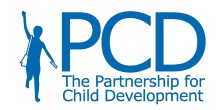 Background
Background  Orphans and Vulnerable Children Defined
Orphans and Vulnerable Children Defined
The concept of orphans and vulnerable children (OVC) does not adhere to a universal definition and varies across countries in sub-Saharan Africa. The following definitions of a child, an orphan and of vulnerability have been adopted:
The child
Defined by the UN Convention on the Rights of the Child as “every human being below the age of eighteen years unless under the law applicable to the child, majority is attained earlier."
The orphan
The official definition of an orphan is a child aged zero to 17 years whose mother, father, or both have died (World Bank OVC Toolkit). There are, however, other children who are referred to as social orphans even though one or both their parents may still be alive but who have been unable to perform parental duties because of illness or acute poverty among other reasons.
Vulnerability
Vulnerability is viewed as "a high probability of a negative outcome" (World Bank OVC Toolkit), or an expected welfare loss above a socially accepted norm, which results from risky or uncertain events, and the lack of appropriate means to deal with them. Vulnerability leaves one at risk of exposure to stressful situations. The degree and type of vulnerability however, varies in each context and overtime.
Vulnerable child
A vulnerable child is defined as being under the age of 18 years and currently at high risk of lacking adequate care and protection. Accordingly, all children are vulnerable by nature compared to adults, but some are more critically vulnerable than others. “Child vulnerability is a downward spiral where each shock leads to a new level of vulnerability, and each new level opens up for a host of new risks. In other words, the probability of a child experiencing a negative outcome rises with each shock.” (World Bank OVC Toolkit)
Characteristics of children defined as vulnerable include those:
- orphaned by the death of one or both parents;
- abandoned by parents;
- living in extreme poverty;
- living with a disability;
- affected by armed conflicts;
- abused by parents or their carers;
- malnourished due to extreme poverty;
- HIV-positive;
- and finally, those marginalized, stigmatized, or even discriminated against.
All vulnerable children have one common denominator: they have no reliable social safety networks on hand to depend upon in order to adequately manage the risk to which they daily exposed.




